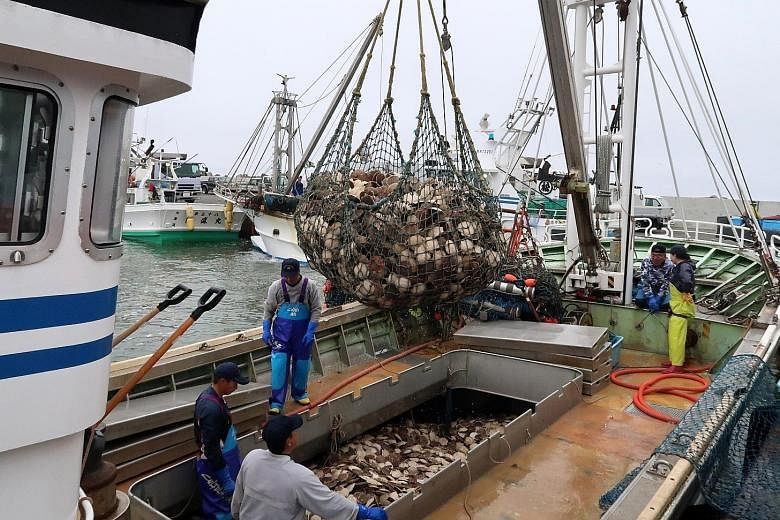SARUFUTSU (Japan) • Sarufutsu village in the far north of Japan's northernmost island is the nation's richest village, thanks to a bounty of scallops pulled from the Sea of Okhotsk.
The village boasts some of the highest average incomes of any town in Japan, thanks to the earnings of some of the fishermen.
But the new 2.4 billion yen (S$29.8 million) scallop factory is not running at full capacity because it cannot get enough workers for lower-paying but important jobs.
It shows that some industries may not survive as the population ages and shrinks, even if they are profitable.
By value, scallops are the biggest international export from Hokkaido. But the workers in the factory are mostly older women, and in about seven or eight years, there will not be any more Japanese working there, according to Mr Koichi Kimura, an executive of the fishing cooperative that runs the facility.
"If we wanted to, we could run 24 hours a day and triple production," says Mr Kimura. "But we would need more than 100 new people for that."
The village's population is not shrinking, but it is flat, so the village authorities are trying to encourage people to move to the town.
For the past three years, the village has run tours to bring people from other parts of Japan to check it out and also appointed the chef of a Tokyo restaurant that uses their scallops as a tourism ambassador. But it is a hard sell; work in the factory is seasonal and wages are low.
While the 250 or so fishing cooperative members who work the boats earn good money, pushing up the average, those employed in the factory earn minimum wages, and it is open for only seven months a year. The factory is closed during the winter.
Without better pay and conditions, it will be hard to attract people to live in the area, but the cooperative does not think it can dramatically increase wages.
"Young Japanese people aren't interested if we just raised the pay a little," says Mr Kimura. "If we were to double or triple wages, we could attract workers, but we wouldn't be able to make ends meet."
WASHINGTON POST

